Atlas V: Rocket launch creates strange lights in UK sky
- Published
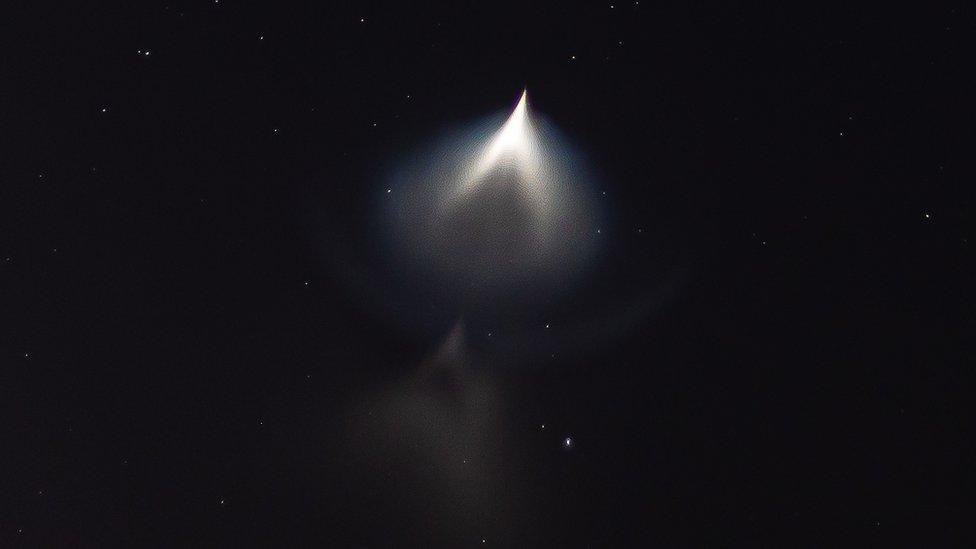
Is it a bird? Is it a plane? No. It's the exhaust product of an orbital manoeuvring system, as seen above South Shields
Amateur stargazers in the UK were sent rushing for their cameras by strange cone-shaped lights in the sky created by a US rocket.
The Atlas V, carrying Nasa's Landsat-9 satellite, launched at about 20:00 BST on Monday.
About two hours later it performed a reversing manoeuvre, releasing two glowing clouds of vapour.
Clear skies made for an out-of-this-world view of the stellar spectacle, visible above large parts of UK.
Photographer Simon Woodley "couldn't believe his eyes" when he snapped the launch from South Shields.
Mr Woodley was out taking photos of the moonrise when he saw the unknown bright light for "three or four minutes".
"I went through the possibilities of comet or aircraft or even a laser beam. It was only when I got home I found out what it was," he said.
Education charity UK Astronomy said the light was the rocket's deorbit burn, external, created as it fires its engines to commence its re-entry into Earth's atmosphere before burning up.
Astronomer and science writer Will Gater said the glowing, teardrop-shaped clouds were a result of sunlight scattering off material released into space.
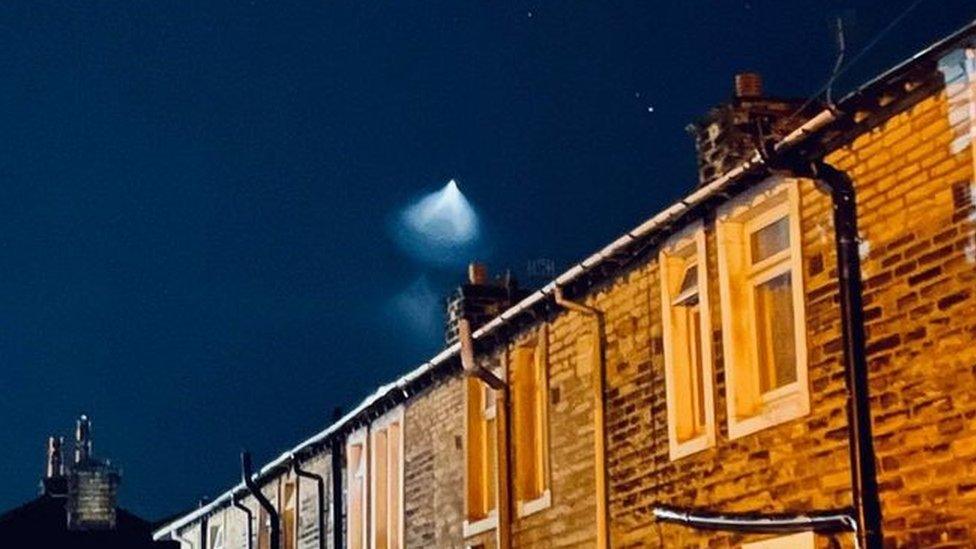
Elliott Stone photographed the rocket from his garden in West Yorkshire
Elliott Stone, who snapped the rocket from his garden in Keighley, West Yorkshire, thought he was seeing a comet at first.
"I noticed it was travelling the wrong way, so I thought it must have been a plane with its light on," Mr Stone said.

What is the Landsat-9 satellite?
Landsat-9 will view the Earth from an altitude just above 700km (435 miles)
Landsat-9 is a satellite that will photograph the Earth's surface
The first Landsat mission was put in orbit in 1972
Landsat monitors cities, crops, forests, deserts and glaciers
Landsat maintains the longest record of surface change on Earth

In Whitley Bay, Tyne and Wear, Ian Sproat was left "scrambling" to set up his camera when he saw the light above him.
"I was gobsmacked, I honestly thought it was a meteor or a comet, never did I expect to see the Landsat-9," he said.
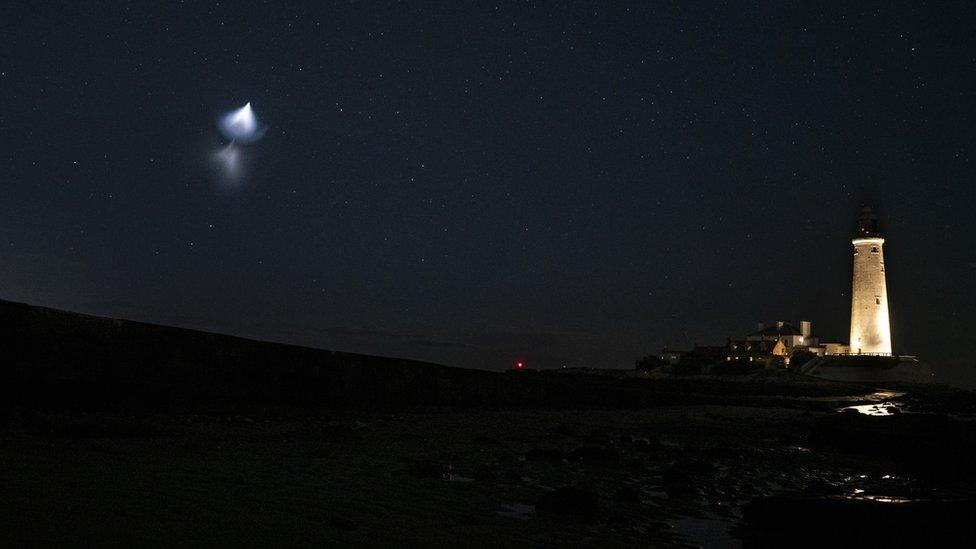
Photographer Ian Sproat said he felt "truly blessed" to have seen the light
Mr Sproat only went to the spot near St Mary's Lighthouse because he thought he might be able to see the northern lights.
"When I got there and was setting up, a ball of light appeared above me," he said.
He felt "truly blessed to have witnessed this spectacular sight", he added.
Fellow astronomy enthusiast Freddy Lees snapped a photo of the rocket from Nottingham as it climbed above the tree line shortly after 22:00.
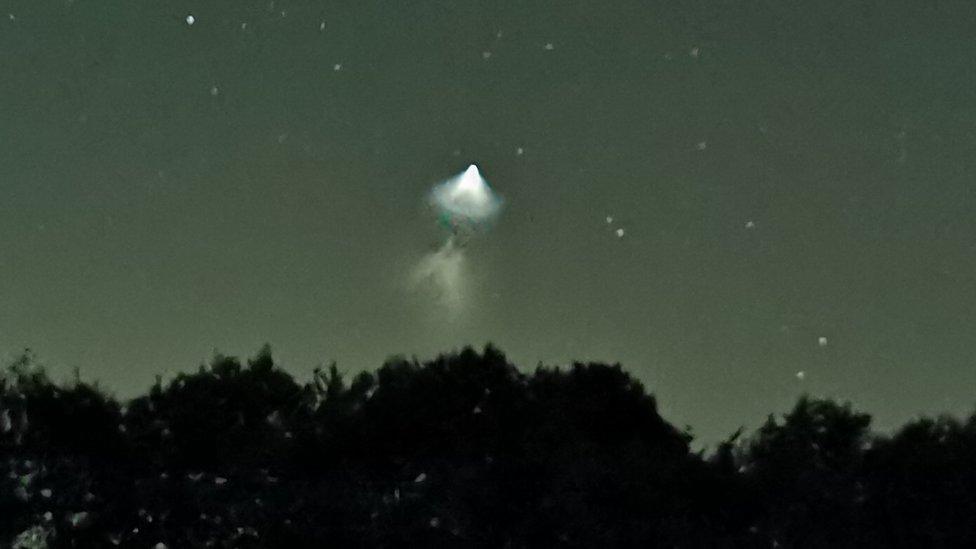
The cone-shaped light was spotted above the UK at about 22:00 BST including over Nottingham
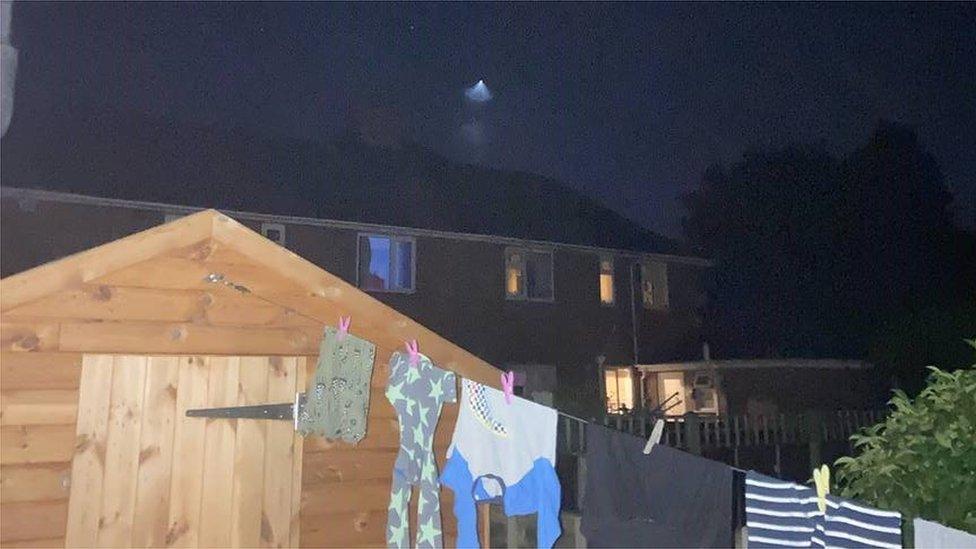
Stargazers in their garden in Norwich were also able to snap the sight
The Atlas V rocket, operated by the United Launch Alliance company, lifted off from California's Vandenberg Space Force base 20:11 BST.
Visible rocket burns are rare in European skies and more often seen above Florida or California.

Follow BBC Yorkshire on Facebook, external, Twitter, external and Instagram, external. Send your story ideas to yorkslincs.news@bbc.co.uk, external.
Related topics
- Published27 September 2021